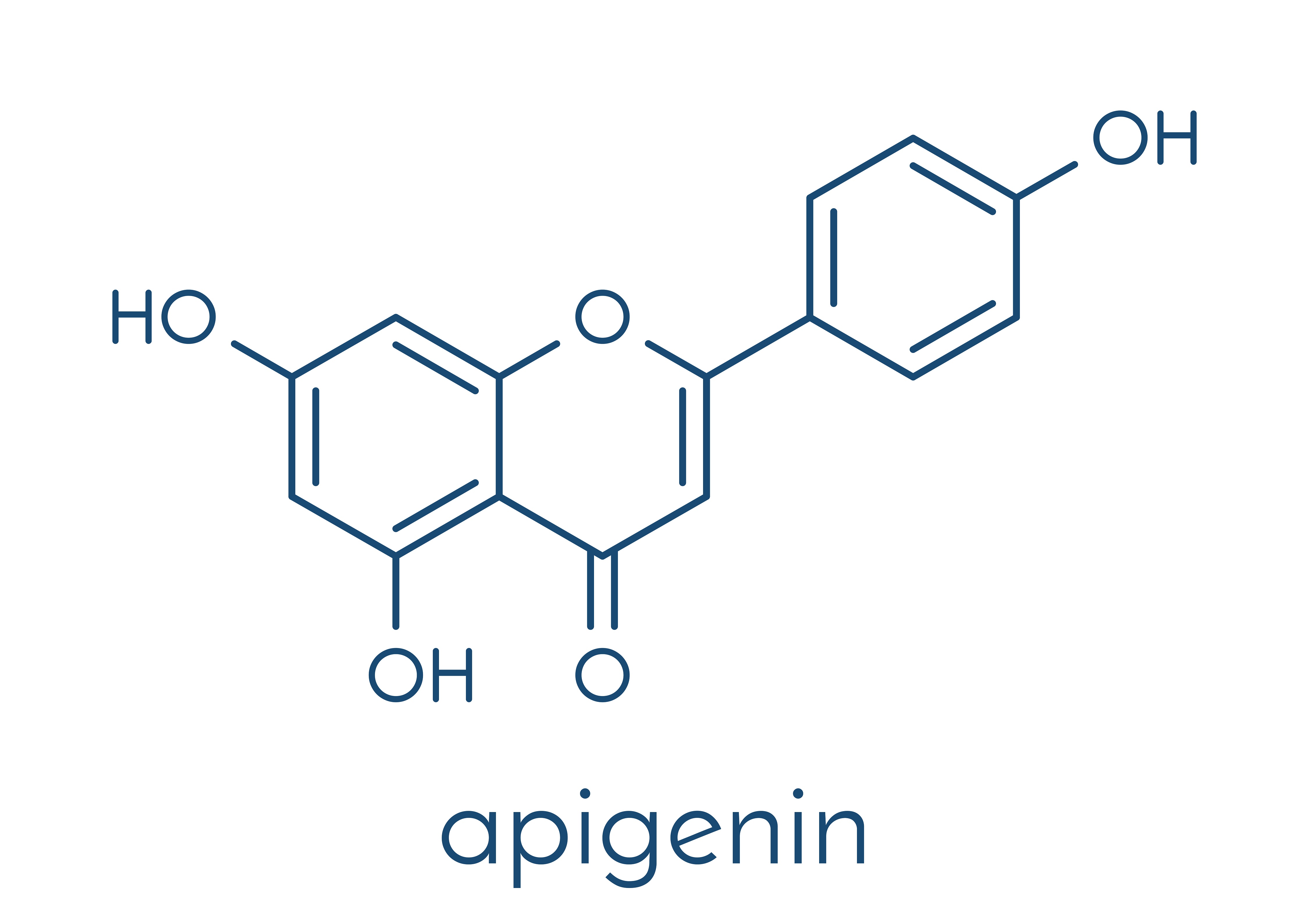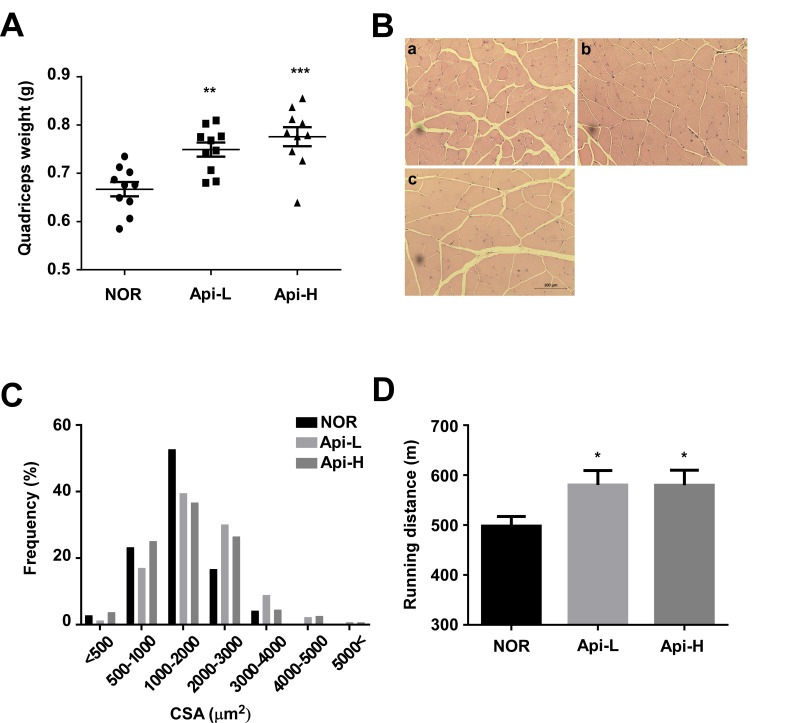In a scientific environment, searching for natural anabolic agents that will not be harmful to health is in the best place. Discoveries of this type are always a great event, because they give athletes better results without compromise. They are also a chance for a better quality of life for the elderly, because they can prevent the loss of muscle tissue, and each% of the loss is reflected negatively on health. It happens that these types of substances are found in foods that often reach our plates, although we do not realize it. An appropriate increase in their amount can give noticeable results. One of such substances seems to be apigenin, present in parsley, celery, grapefruit, onion, chamomile, thyme and red paprika.
What is apigenin?
Apigenin (5,7,4'-trihydroxyflavone) is a flavonoid, similar to quercetin, hesperidin and kemferol. It is one of the phytochemicals that are attributed to anti-cancer activity. It results to the ability to enhance autophagy. It also shows some interactions with receptors and transporters in the central nervous system. This is mainly due to the positive modulation of GABA (A) 1 receptors, which causes sedative and silencing effects. Apigenin also has anti-inflammatory effects, which is due to the modulation of COX and iNOS2 activity.

What is the influence on sports condition?
We know one interesting study on mice from 20173. This study tested the effect of apigenin supplementation on muscle development (specifically the weight of the quadriceps muscle) and endurance in training on the treadmill. The mice were divided into 3 control groups, i.e. regular feed, and the other two groups received feed from 0.2% (Api-L) or 0.4% (Api-H) apigenin. The trial lasted 7 weeks.
It has been discovered that apigenin affects a fairly wide range of cell processes. First, it influences the increase of MHC (myosin heavy chain) mRNA expression for all three types of muscle fibers - MHC1, MHC2A and MHC2B, and mRNA for GPR56 (G protein-coupled receptor 56). Expression also increased for PGC-1α isoforms 1 and 4. In a cascade reaction, IGF1 also increased. The level of irisin increased as a result of the increased expression of FNDC5, which is its precursor. Another protein that has undergone enhanced expression is Prmt7. This is not all, and at the moment it looks a bit magical, but trust, it works on the muscles. In a small summary, apigenin affects muscle hypertrophy through the Prmt7-PGC-1α-GPR56 pathway and through Prmt7-p38-myoD on muscle cell differentiation. Below is a small diagram,which in a simplified way shows what paths our flavonoid works. The governmenters of very detailed data may delve into the publication of Jin Jang and co-authors (Oncotarget 2017) 3.
Let's take a look at more accessible, practical data. The study noted an increase in muscle endurance, which was manifested by a longer distance running on the treadmill. The methodology of running training itself was such that the distance measurement was terminated when the mouse touched the netting surrounding the treadmill (at 50V) for more than 10 seconds. Both groups (Api-L and Api-H) were better than placebo, but they did not differ from each other. This means that a small dose of apigenin is sufficient to improve strength.
Apigenin did not significantly affect overall body weight, fat mass, or liver and heart mass. However, the mass of the quadriceps muscle increased, and this time the effect was dose-dependent - a higher dose of apigenin resulted in greater growth. As for biochemical changes, a higher dose was also needed here.

Figure 1 Effect of apigenin on quadricep muscle weight and treadmill running distance. A.-D. Male C57BL / 6 mice were provided ad libitum access to standard diet or standard diet supplemented with 0.2% apigenin (Api-L) or 0.4% apigenin (Api-H) for 7 weeks. A. Apigenin increased quadricep muscle weight in a dose-dependent manner. Each point represents one animal, and the horizontal bars mean mean SEM. B.-C. Apigenin promoted quadricep muscle fiber hypertrophy. B. Representative images of H & E staining of sections of quadricep muscle; aNOR, bApi-L, cApi-H C. Frequency distribution of muscle fiber cross-sectional area (CSA) D. Apigenin enhanced running on the accelerating treadmills. NOR normal group, Api-L apigenin 0.2% diet group, Api-H apigenin 0.4% diet group. Data represent means ± SEM. * p <0.05, ** p <0.01, *** p <0.001 versus the normal group.
Source Young Jin Jang et al. Apigenin enhances skeletal muscle hypertrophy and myoblast differentiation by regulating Prmt7 Oncotarget. 2017; 878300-78311. https://doi.org/10.18632/oncotarget.20962
Apigenin benefits in general
Apigenin seems to be a nice anti-catabolic agent for the elderly, which has in addition many health-promoting properties - mood improvement, anticancer properties, and lipid metabolism. It is certainly not a golden mean for bodybuilders, but they take into account the full profile of activity, it can be an attractive support supplement. Athletes will probably like the information that apigenin inhibits the aromatization of androgens to estrogen to some extent, which can positively affect the quality of the body. In many publications on apigenin, relatively high doses are said, but here, in terms of the equivalent for humans, the doses used were around 20 and 40 mg, so very low. Perhaps using 100+ mg doses daily, anabolic effects would become more significant.
Let's mention, finally, the pharmacokinetics of apigenin. It has a very long half-life, which should be taken into account. The half-life of this agent is as much as 91.8 h4, almost 4 days! The accumulation effect must therefore be taken into account. Apigenin is a relatively safe agent, so long duration of action is rather beneficial, because it increases the stability of action and does not require frequent administration.
Apigenin - conclusion
apigenin is a very interesting phyto-compound that, apart from numerous health benefits, also gives anti-catabolic and slightly anabolic effects. This can be used especially in the elderly in the prevention of sarcopenia, but amateur athletes can expect some benefits at higher doses. In general, anabolic activity should not be the main aspect to pay attention to in apigenin.






